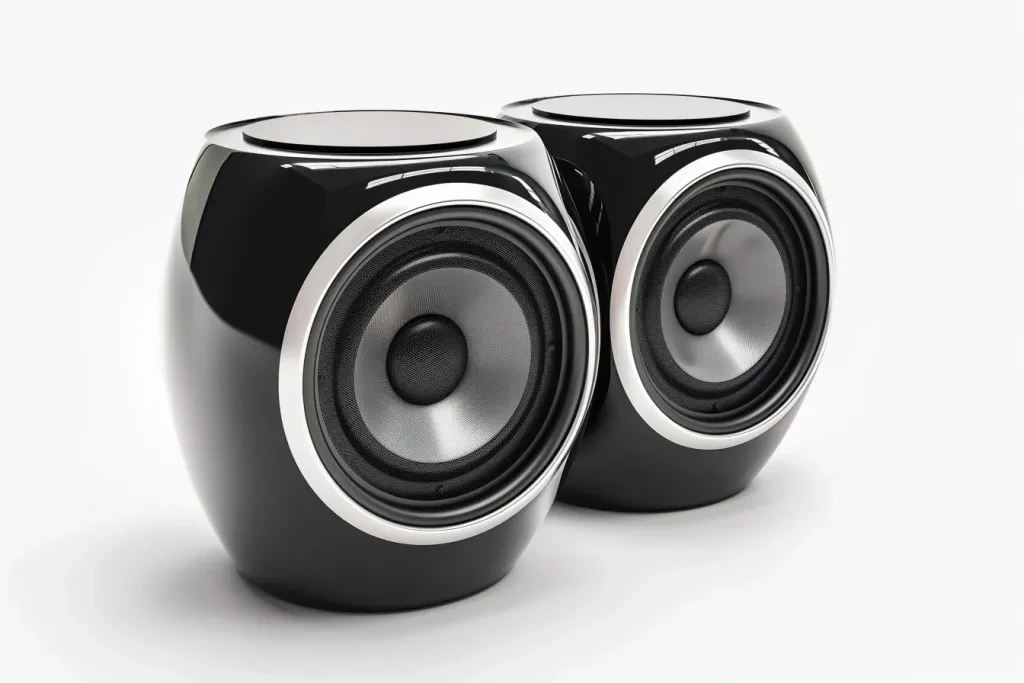Subwoofers, the powerhouse of the audio world, play a pivotal role in enhancing the depth and dimension of sound. Whether it’s the rumble of an action movie or the subtle bass line of a jazz piece, subwoofers bring out sounds you can feel as much as hear. This article explores the essential aspects of subwoofers that enthusiasts and newcomers alike should know to make informed decisions.
Table of Contents:
– What makes subwoofers unique
– The importance of size and power
– Connectivity options for seamless integration
– Placement and calibration for optimal performance
– Future trends in subwoofer technology
What makes subwoofers unique

Subwoofers stand apart from other speakers due to their ability to reproduce the lowest frequencies of the audio spectrum. This capability is not just about adding volume; it’s about enriching the listening experience with layers of sound that standard speakers cannot achieve. Understanding the mechanics behind subwoofers, including their large drivers and dedicated enclosures, provides insight into their unique role in audio systems.
The design of subwoofers focuses on delivering precise, powerful bass without distortion. This is achieved through a combination of speaker construction and the acoustic properties of the enclosure. By moving a large volume of air, subwoofers create sound waves that you can feel, adding a physical dimension to audio that immerses listeners in the experience.
Moreover, subwoofers’ frequency response is tailored to handle the demands of low-frequency effects (LFE) channels in multi-channel audio formats. This specialization ensures that movies, music, and games benefit from a full, dynamic soundstage that enhances every listening session.
The importance of size and power

When it comes to subwoofers, size and power are closely intertwined with performance. The size of the subwoofer, often measured by the diameter of its driver, impacts its ability to produce low frequencies. Larger drivers are generally capable of moving more air, resulting in deeper bass. However, the quality of the bass also depends on the power behind it.
The power output of a subwoofer, measured in watts, indicates how loudly and clearly it can produce sound. Higher wattage often equates to more robust performance, allowing the subwoofer to handle intense bass passages without distortion. It’s essential to balance size and power according to your room’s acoustics and your personal preferences to achieve the desired audio experience.
Selecting a subwoofer involves considering both its physical footprint and its power consumption. Larger, more powerful subwoofers may offer superior performance but require more space and energy. Understanding these trade-offs is key to choosing a subwoofer that fits both your audio system and your living environment.
Connectivity options for seamless integration

Integrating a subwoofer into an existing audio setup requires attention to connectivity options. Modern subwoofers offer a variety of inputs and outputs to accommodate different systems, from traditional wired connections to wireless technologies. Understanding these options ensures that your subwoofer can seamlessly work with your other audio components.
Wired connections, including line-level (RCA) and speaker-level inputs, provide reliable, high-quality audio transmission. Line-level inputs are common in home theater setups, connecting the subwoofer to an AV receiver that manages the audio signal. Speaker-level inputs allow for direct connection to an amplifier or receiver without a dedicated subwoofer output, offering flexibility in older or more basic systems.
Wireless connectivity, increasingly popular in modern subwoofers, offers the convenience of placement without the clutter of cables. By connecting wirelessly to a compatible receiver or soundbar, these subwoofers provide flexibility in positioning, allowing you to optimize sound quality and aesthetics in your space.
Placement and calibration for optimal performance

The placement of a subwoofer can significantly affect its performance and the overall sound quality of your system. Finding the right location involves balancing acoustical considerations with practical limitations of your room. Experimenting with different positions can reveal the optimal spot for deep, impactful bass.
Calibration is equally important in fine-tuning your subwoofer’s performance. Many modern subwoofers include built-in calibration tools that automatically adjust settings for the best sound. For those without such features, manual calibration using a sound meter and test tones can achieve a balanced, integrated audio experience.
Considering room acoustics, such as flooring material and furniture placement, can also influence subwoofer performance. Soft surfaces absorb sound, while hard surfaces reflect it, affecting how bass frequencies are perceived. Tailoring your subwoofer’s settings to your specific environment ensures the most accurate and satisfying sound.
Future trends in subwoofer technology

As technology advances, subwoofers continue to evolve, offering new features and improvements that enhance the listening experience. Innovations in driver materials and design are making subwoofers more efficient and capable of producing cleaner, more precise bass at all volume levels.
Wireless technology is also a growing trend, with more subwoofers adopting Bluetooth and Wi-Fi connectivity for easier integration into home audio systems. This development allows for greater flexibility in placement and compatibility with a wide range of devices.
Moreover, the integration of smart technology into subwoofers is beginning to take shape. Voice control, automatic room calibration, and app-based controls are becoming more common, providing users with unprecedented convenience and customization options.
Conclusion:
Subwoofers are essential components of any high-quality audio system, offering depth and dimension to sound that speakers alone cannot achieve. By understanding the key factors that influence their performance, including size, power, connectivity, placement, and calibration, you can choose and configure a subwoofer that dramatically enhances your listening experience. As technology progresses, the future of subwoofers promises even greater advancements in sound quality and user convenience, ensuring that the foundation of our audio systems remains as impactful as ever.





 বাংলা
বাংলা Nederlands
Nederlands English
English Français
Français Deutsch
Deutsch हिन्दी
हिन्दी Bahasa Indonesia
Bahasa Indonesia Italiano
Italiano 日本語
日本語 한국어
한국어 Bahasa Melayu
Bahasa Melayu മലയാളം
മലയാളം پښتو
پښتو فارسی
فارسی Polski
Polski Português
Português Русский
Русский Español
Español Kiswahili
Kiswahili ไทย
ไทย Türkçe
Türkçe اردو
اردو Tiếng Việt
Tiếng Việt isiXhosa
isiXhosa Zulu
Zulu